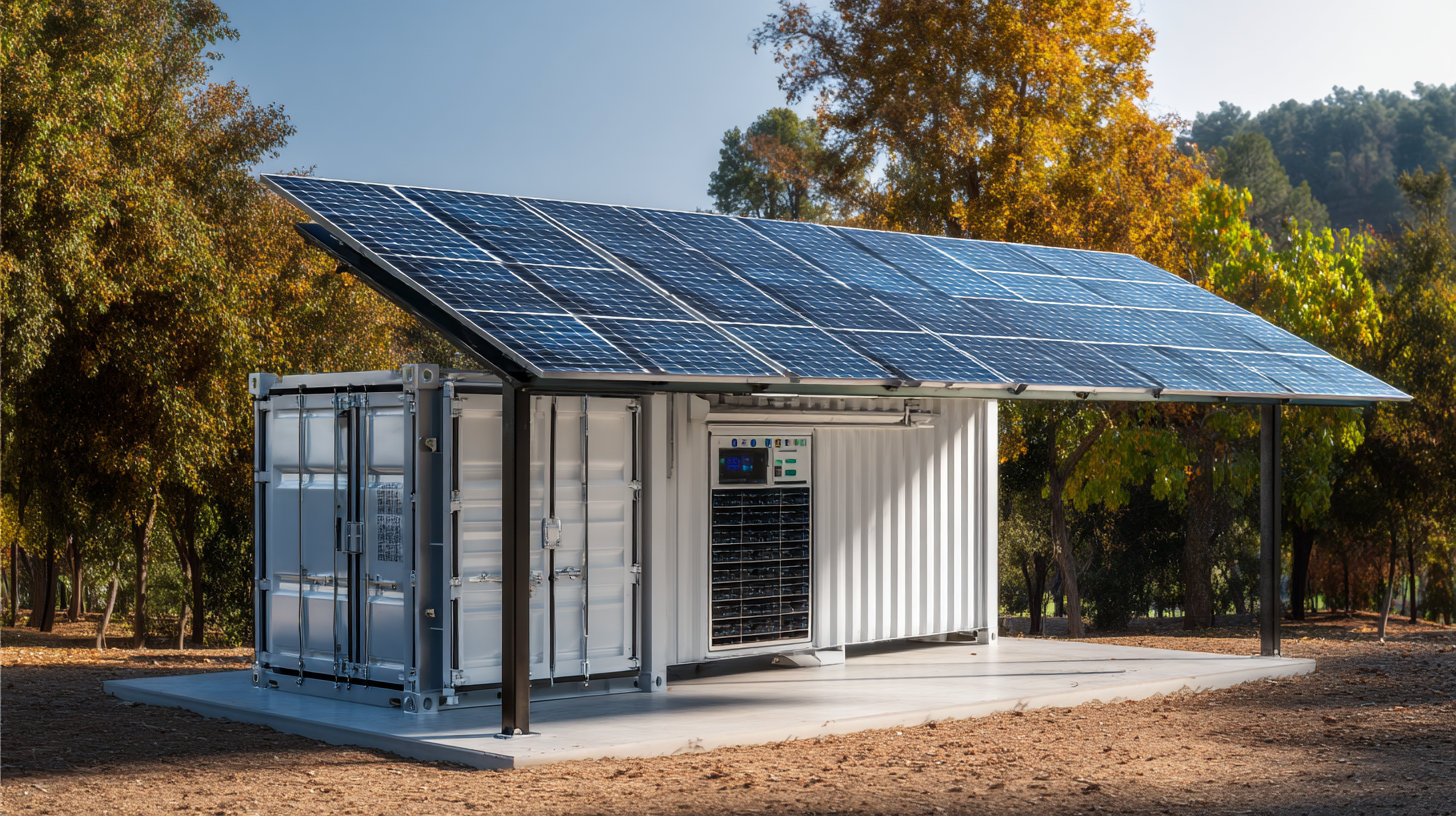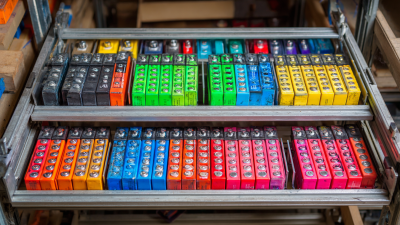Revolutionizing Energy Storage: The Future of Battery Solutions for Sustainable Living
As we stand on the cusp of a new era in energy consumption, the quest for effective battery solutions has never been more urgent. With the global battery market projected to reach $100 billion by 2025, the push for advanced energy storage technologies is driven by increasing demand for renewable energy sources, electric vehicles, and portable electronic devices. According to a recent report by Bloomberg New Energy Finance, the global capacity for lithium-ion batteries is expected to grow sixfold by 2030, indicating a significant shift towards more sustainable energy practices. These developments not only promise to enhance the efficiency and longevity of energy storage systems but also highlight the critical role of battery solutions in achieving net-zero emissions goals. As we explore the future of energy storage, innovative approaches in battery technology will be fundamental to creating a sustainable living environment for future generations.

Understanding the Basics of Energy Storage Technologies for Sustainable Living
Energy storage technologies are vital components in the pursuit of sustainable living, as they enable the efficient use of renewable energy. According to a report by the International Energy Agency (IEA), global energy storage capacity is expected to exceed 1,300 GWh by 2040, underscoring the increasing demand for solutions that can store energy generated from renewable sources like solar and wind. This growth is primarily driven by advancements in battery technology, which have significantly reduced costs and improved efficiency over the past decade. For instance, the average price of lithium-ion batteries fell by over 85% from 2010 to 2020, making them a more accessible option for energy storage solutions.
Moreover, understanding the different types of energy storage technologies is essential for optimizing their use in sustainable living. Mechanical storage systems, such as pumped hydro storage, currently account for approximately 93% of global storage capacity. However, technologies like compressed air energy storage (CAES) and thermal energy storage are gaining traction as they offer unique advantages, including long-duration storage capabilities. According to a report from BloombergNEF, the market for long-duration energy storage could reach $430 billion by 2040, highlighting the critical role these innovations will play in balancing energy supply and demand, especially as more nations transition to cleaner energy sources.
Key Innovations in Battery Chemistry and Design for Enhanced Performance
Recent advancements in battery chemistry and design are transforming the landscape of energy storage, paving the way for a more sustainable future. One of the most notable innovations is the development of solid-state batteries, which replace traditional liquid electrolytes with solid materials. This change significantly enhances energy density and safety, vastly reducing the risk of leaks and fires associated with conventional lithium-ion batteries. Solid-state technology not only allows for longer-lasting batteries but also facilitates faster charging times, making them particularly beneficial for electric vehicles and portable electronics.
Moreover, researchers are exploring new materials like graphene and silicon nanowires to improve battery efficiency. Graphene-based batteries offer higher conductivity and greater flexibility, leading to faster charge and discharge rates, while silicon anodes can store more lithium ions than traditional graphite anodes, enhancing capacity. These innovations not only contribute to better performance but also minimize environmental impact by using more sustainable materials. As these technologies advance, they hold the key to revolutionizing energy storage solutions, making renewable energy more viable and accessible for everyday use.

Comparative Analysis of Renewable Energy Sources and Their Storage Solutions
The global fixed energy storage market is poised for significant growth, with projections indicating an increase from $90.36 billion in 2024 to $231.06 billion by 2032, representing a compound annual growth rate (CAGR) of 12.45%. This boom is largely driven by the expanding renewable energy market and the need for efficient storage solutions that can manage supply and demand effectively. Notably, the compressed air energy storage market is also expected to see substantial growth, with a forecast CAGR exceeding 7.6% from 2025 to 2034, surpassing $1.6 billion by 2024.
In the realm of mobile energy storage systems, the market is anticipated to swell from $58.28 billion in 2025 to $156.16 billion by 2032, reflecting a remarkable CAGR of 15.12%. The integration of bi-directional charging technology in electric vehicles presents a transformative opportunity, enabling these vehicles to store power and return it to the grid when needed. However, despite the advancements in renewable energy, the challenge of reliable and consistent energy supply persists, emphasizing the crucial role of modern battery storage solutions in achieving sustainable energy goals.
Revolutionizing Energy Storage: Comparative Analysis of Renewable Energy Sources and Their Storage Solutions
Implementing Battery Solutions in Smart Homes for Energy Efficiency
The global Home Energy Management System (HEMS) market is projected to reach $5.382 billion by 2025 and is expected to grow to $19.98 billion by 2033, with a compound annual growth rate of 17.82%. This significant growth indicates a rising demand for smart home technologies that enhance energy efficiency and sustainability. As the market evolves, innovative battery solutions play a crucial role in optimizing energy usage within these smart homes, enabling homeowners to harness renewable energy sources effectively.
Recent advancements in distributed energy storage systems are reshaping the landscape of home energy consumption. Industry leaders are introducing integrated solutions that combine solar energy generation with smart energy management, catering specifically to high-end residential needs. This integration not only facilitates greater energy independence but also addresses the urgent demand for an innovative energy system capable of supporting smart living environments. As the push for energy efficiency gains momentum, the synergy between smart home technologies and advanced battery solutions will be pivotal in driving sustainable living practices forward.
Future Trends and Challenges in the Energy Storage Market for Green Living
 The energy storage market is at a pivotal juncture, driven by the urgent need for
sustainable living solutions. One of the key trends shaping this landscape is the development of
advanced battery technologies, such as solid-state batteries and
flow batteries, which promise higher energy densities and longer life cycles. These innovations not only enhance the efficiency of renewable energy integration
but also address the current limitations of traditional lithium-ion batteries. As cities transition to greener infrastructure, the demand for such innovative storage
solutions will only continue to rise.
The energy storage market is at a pivotal juncture, driven by the urgent need for
sustainable living solutions. One of the key trends shaping this landscape is the development of
advanced battery technologies, such as solid-state batteries and
flow batteries, which promise higher energy densities and longer life cycles. These innovations not only enhance the efficiency of renewable energy integration
but also address the current limitations of traditional lithium-ion batteries. As cities transition to greener infrastructure, the demand for such innovative storage
solutions will only continue to rise.
However, alongside these promising trends, the energy storage sector faces significant challenges. The supply chain for critical materials remains fragile, particularly for lithium and cobalt, which are central to battery production. Moreover, recycling and end-of-life management of batteries pose environmental concerns that must be addressed to prevent future sustainability issues. The realization of a truly circular economy in battery production will be crucial, requiring collaboration between manufacturers, policymakers, and researchers to overcome these hurdles and ensure the longevity of green living innovations.
Related Posts
-

7 Secrets to Finding the Best Battery Shop for Your Needs
-

How to Maximize the Lifespan of Your Deep Cycle Batteries
-

How an UPS Backup System Can Save Your Data During Power Outages: Essential Insights
-

7 Essential Facts About the Best UPS Backup System for Your Business Needs
-

The Ultimate Guide to Choosing the Best UPS Backup System for Your Home Office
-

Exploring Battery Service Innovations at the 138th Canton Fair 2025: Industry Trends and Insights
